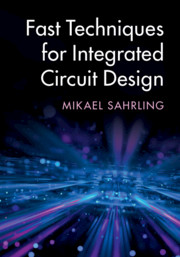Book contents
- Fast Techniques for Integrated Circuit Design
- Reviews
- Fast Techniques for Integrated Circuit Design
- Copyright page
- Dedication
- Contents
- Preface
- 1 General Guidelines in Estimation Analysis in Integrated Circuits
- 2 Basic Amplifier Stages
- 3 Higher Level Amplifier Stages
- 4 Electromagnetism: Fundamentals
- 5 Electromagnetism: Circuit Applications
- 6 Electromagnetic Field Simulators
- 7 System Aspects
- Book part
- Index
- References
6 - Electromagnetic Field Simulators
Published online by Cambridge University Press: 08 August 2019
- Fast Techniques for Integrated Circuit Design
- Reviews
- Fast Techniques for Integrated Circuit Design
- Copyright page
- Dedication
- Contents
- Preface
- 1 General Guidelines in Estimation Analysis in Integrated Circuits
- 2 Basic Amplifier Stages
- 3 Higher Level Amplifier Stages
- 4 Electromagnetism: Fundamentals
- 5 Electromagnetism: Circuit Applications
- 6 Electromagnetic Field Simulators
- 7 System Aspects
- Book part
- Index
- References
Summary
The lessons from the previous chapters are here applied to a very brief discussion of numerical techniques. First we show how to calculate the capacitance of three-dimensional structures; we then follow this with similar calculations of inductance. Both of these are well defined in the long wavelength approximation. We then describe how a full wave numerical solutions can be implemented using the popular method-of-moments. We follow this by discussing how to implement excitations or wave ports and how to implement boundary conditions between different dielectric layers.
Keywords
- Type
- Chapter
- Information
- Fast Techniques for Integrated Circuit Design , pp. 151 - 164Publisher: Cambridge University PressPrint publication year: 2019

